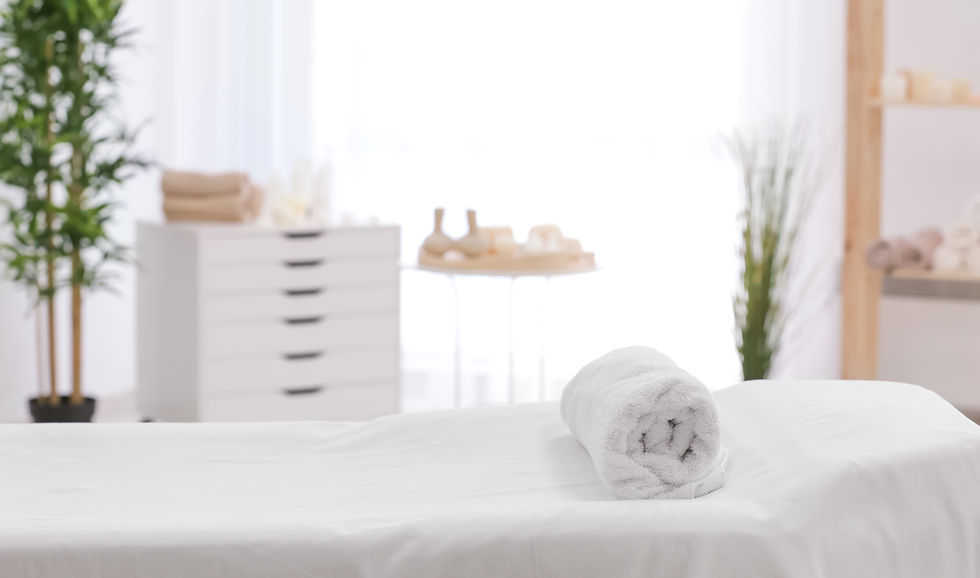Improving your quality of life is my goal!

✅
Indikationen für medizinische Massage
Medizinische Massage wird häufig von Ärzten, Therapeuten oder aufgrund einer Zusatzversicherung empfohlen und umfasst folgende Anwendungsbereiche:
🦴 Erkrankungen des Bewegungsapparats:
-
Rückenschmerzen (z. B. muskulär bedingt, Lumbalgie)
-
Verspannungen der Nacken- und Schultermuskulatur
-
Bandscheibenvorfälle (nach akuter Phase, unterstützend in der Reha)
-
Wirbelblockaden und Bewegungseinschränkungen
-
Skoliose und Fehlhaltungen
-
Arthrose (z. B. in Wirbelsäule, Hüfte, Knie)
-
Ischialgie / Ischiasbeschwerden
💪 Muskuläre Beschwerden:
-
Muskelverspannungen oder Muskelverhärtungen
-
Myogelosen (lokale Muskelknoten)
-
Muskelkater und Überlastungsschäden
-
Sehnenreizungen oder -entzündungen (z. B. Tennisarm, Golferellenbogen)
🩹 Nach Verletzungen oder Operationen (Rehabilitation):
-
Postoperative Narben- und Gewebsbehandlung
-
Verbesserung der Beweglichkeit nach Ruhigstellung
-
Unterstützung bei Prothesen und Gelenkersatz (Hüfte, Knie)
-
Förderung der Durchblutung und Regeneration
🧠 Neurologische & psychosomatische Indikationen:
-
Stressbedingte Beschwerden (z. B. Spannungskopfschmerzen, Bruxismus/Zähneknirschen)
-
Schlafstörungen durch muskuläre Anspannung
-
Psychosomatische Verspannungen (z. B. durch Angst oder Dauerstress)
-
Begleitend bei Depressionen oder Burnout zur Entspannung
🫀 Durchblutungsförderung & Stoffwechsel:
-
Schwellungen und Lymphstau (in Kombination mit manueller Lymphdrainage)
-
Förderung der Gewebedurchblutung
-
Unterstützung des Stoffwechsels und der Regeneration
🕒 Wann lohnt sich eine medizinische Massage?
-
Bei chronischen Beschwerden: z. B. Rückenschmerzen durch langes Sitzen, Fehlhaltungen.
-
Nach akuten Verletzungen/OPs: Sobald die akute Phase überstanden ist (ärztliche Freigabe notwendig).
-
Präventiv: Bei einseitiger Belastung (Büro, Handwerk, Sport).
-
Zur Entspannung: Bei stressbedingten muskulären Spannungen oder psychosomatischen Beschwerden.
-
In Kombination mit Therapie: Ergänzend zu Physiotherapie oder Training, um Heilung zu beschleunigen.
Therapeutic treatments
With health insurance recognition
Therapeutic massages can generally be reimbursed through your health insurance's supplementary insurance. Clarify this with your health insurance provider.
Appointments can be made via the contact details , via chat or directly online, soon also via the therapy app (still under construction)

1
Therapeutic massage treatment
Individual treatment tailored to each person.
What is a therapeutic massage? A therapeutic massage is a method for treating a wide range of health problems and illnesses. Its effectiveness is scientifically proven, which is why it is one of the recognized remedies and is paid for by many health insurance companies. Unlike wellness massages, therapeutic massages may only be carried out by professionals, including doctors, physiotherapists, medical masseurs. The massage combines various techniques to stimulate the skin, subcutaneous tissue, muscles, tendons, connective tissue as well as nerves, blood and lymph vessels. The aim is to achieve a physical reaction through manual stimulation and to activate or support the healing process.
2
Manual lymph drainage
Manual lymphatic drainage (MLD) is a highly specialised form of massage that aims to support and improve the function of the lymphatic system. This gentle technique is used to promote the natural circulation of lymph, which is especially important in patients suffering from lymphedema. Lymphedema can occur as a result of medical procedures, such as breast cancer surgery, when the normal drainage pathways of the lymph are disrupted. MLD helps to move the accumulated fluid and drain it away from the affected area, resulting in a reduction in swelling and relief of associated discomfort. In addition, MLD can strengthen the immune system, promote healing and improve well-being. It is important that this therapy is performed by a trained professional who has mastered the specific techniques to ensure it is effective and safe.
3
Foot reflexology massage
Foot reflexology is a holistic form of therapy in which pressure is applied to specific reflex zones on the feet. These zones are connected to various organs in the body. By stimulating these zones, blockages in the energy pathways can be released, which promotes blood circulation and activates the body's self-healing powers. This gentle therapy can reduce anxiety and pain and has positive effects in the treatment of migraines, headaches and back pain. It also supports the regulation of hormone levels and is therefore recommended for menopausal symptoms. Even people without specific complaints benefit from its relaxing effect. It is fascinating that foot reflexology has been practiced in Far Eastern cultures for thousands of years, but only became known in Europe at the beginning of the 20th century through the American doctor William H. Fitzgerald.
4
Connective tissue and fascia massage
Connective tissue massage, based on the concept of Head's zones, is a form of neural therapy. It uses techniques for the skin, subcutaneous tissue and fascia to treat the connective tissue zones. The cutaneous-visceral reflex arc causes a nervous-reflex reaction to internal organs, the musculoskeletal system and the skin. This massage is mainly used to treat spinal and peripheral joint dysfunction, arthrosis, rheumatic diseases as well as nerve root pain, sciatica and neuralgia.